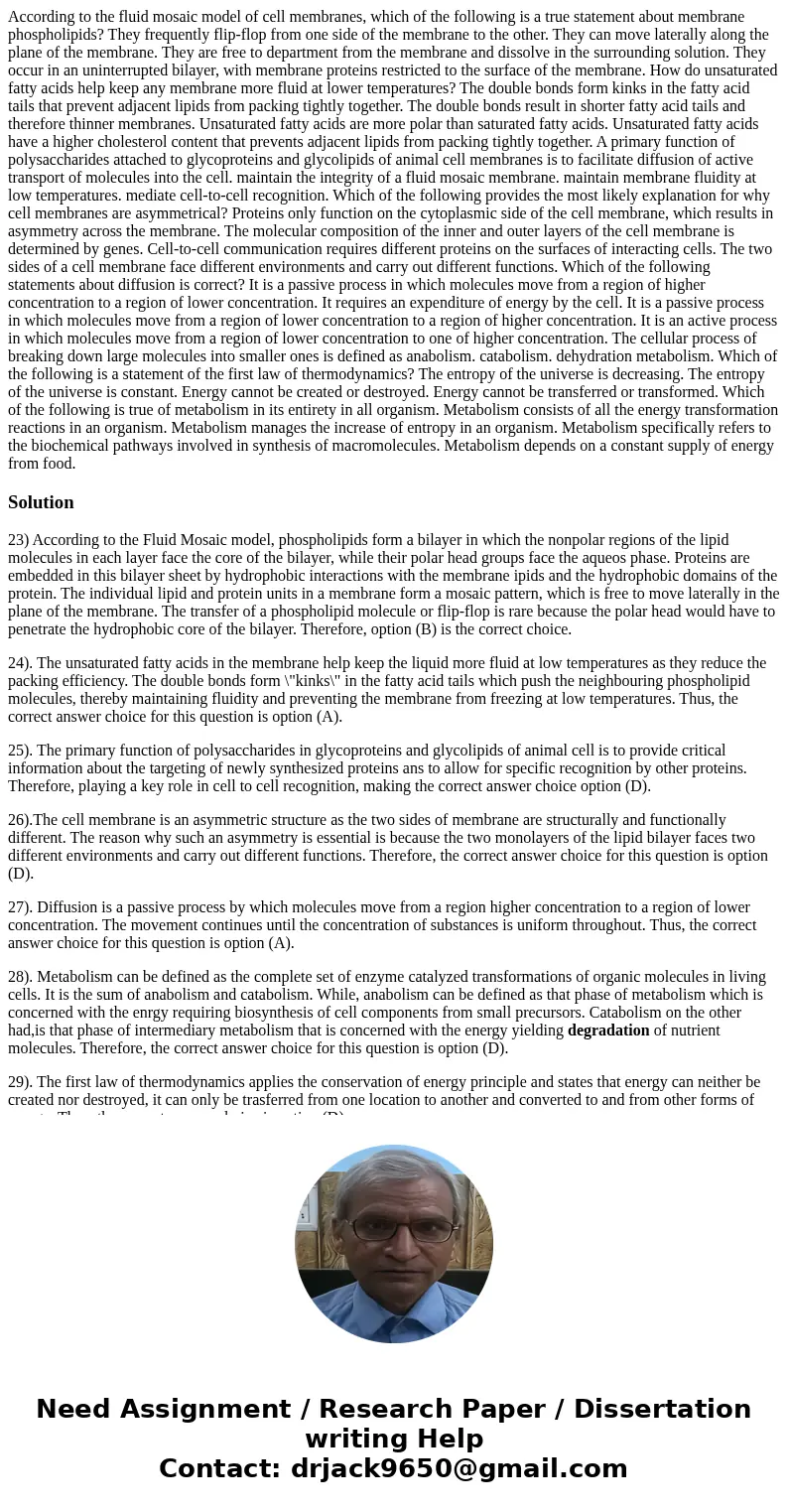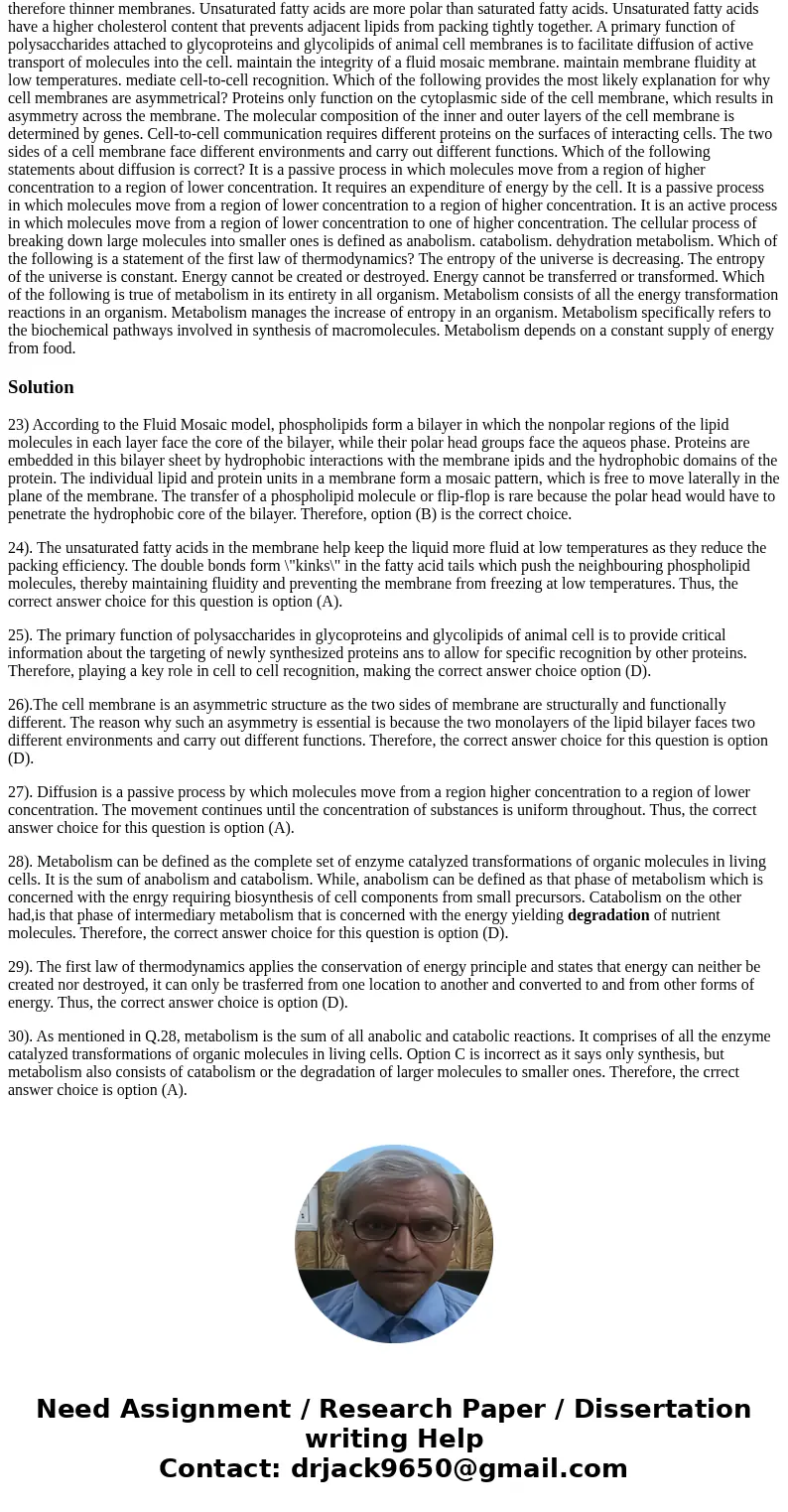According to the fluid mosaic model of cell membranes which
Solution
23) According to the Fluid Mosaic model, phospholipids form a bilayer in which the nonpolar regions of the lipid molecules in each layer face the core of the bilayer, while their polar head groups face the aqueos phase. Proteins are embedded in this bilayer sheet by hydrophobic interactions with the membrane ipids and the hydrophobic domains of the protein. The individual lipid and protein units in a membrane form a mosaic pattern, which is free to move laterally in the plane of the membrane. The transfer of a phospholipid molecule or flip-flop is rare because the polar head would have to penetrate the hydrophobic core of the bilayer. Therefore, option (B) is the correct choice.
24). The unsaturated fatty acids in the membrane help keep the liquid more fluid at low temperatures as they reduce the packing efficiency. The double bonds form \"kinks\" in the fatty acid tails which push the neighbouring phospholipid molecules, thereby maintaining fluidity and preventing the membrane from freezing at low temperatures. Thus, the correct answer choice for this question is option (A).
25). The primary function of polysaccharides in glycoproteins and glycolipids of animal cell is to provide critical information about the targeting of newly synthesized proteins ans to allow for specific recognition by other proteins. Therefore, playing a key role in cell to cell recognition, making the correct answer choice option (D).
26).The cell membrane is an asymmetric structure as the two sides of membrane are structurally and functionally different. The reason why such an asymmetry is essential is because the two monolayers of the lipid bilayer faces two different environments and carry out different functions. Therefore, the correct answer choice for this question is option (D).
27). Diffusion is a passive process by which molecules move from a region higher concentration to a region of lower concentration. The movement continues until the concentration of substances is uniform throughout. Thus, the correct answer choice for this question is option (A).
28). Metabolism can be defined as the complete set of enzyme catalyzed transformations of organic molecules in living cells. It is the sum of anabolism and catabolism. While, anabolism can be defined as that phase of metabolism which is concerned with the enrgy requiring biosynthesis of cell components from small precursors. Catabolism on the other had,is that phase of intermediary metabolism that is concerned with the energy yielding degradation of nutrient molecules. Therefore, the correct answer choice for this question is option (D).
29). The first law of thermodynamics applies the conservation of energy principle and states that energy can neither be created nor destroyed, it can only be trasferred from one location to another and converted to and from other forms of energy. Thus, the correct answer choice is option (D).
30). As mentioned in Q.28, metabolism is the sum of all anabolic and catabolic reactions. It comprises of all the enzyme catalyzed transformations of organic molecules in living cells. Option C is incorrect as it says only synthesis, but metabolism also consists of catabolism or the degradation of larger molecules to smaller ones. Therefore, the crrect answer choice is option (A).


 Homework Sourse
Homework Sourse